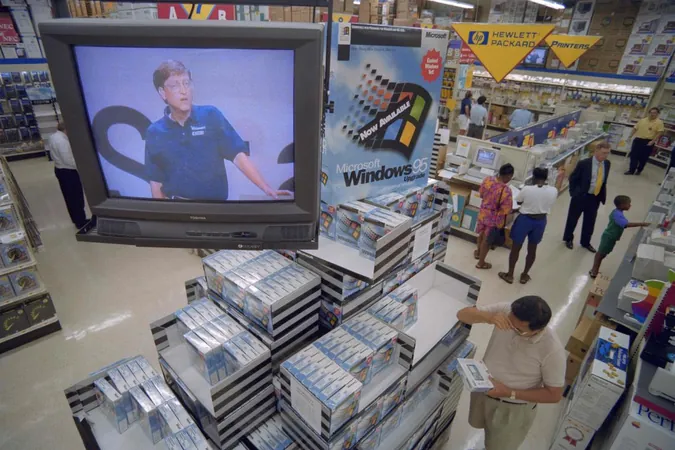
Five Iconic Microsoft Contributions to Computer Culture You Can't Forget!
2025-03-31
Author: John Tan
For decades, Microsoft has been synonymous with desktop software, providing tools that have allowed millions to accomplish a variety of tasks. However, this tech giant has often found itself the target of criticism and ridicule, despite its pervasive influence on everyday computing. Here's a look at five memorable legacies Microsoft has left on computer culture—some cherished, some challenged.
1. The Infamous Blue Screen of Death
A notorious emblem of computing woes, the Blue Screen of Death (BSOD) first appeared with early Windows versions and continues to haunt users today—though it's thankfully less common now. Displayed when the operating system fails due to a fatal error, the BSOD features a stark blue background with white text that conveys the nature of the error. Originally designed by Steve Ballmer, the screen has evolved over the years to include sympathy gestures like a sad-face emoji. For many frustrated users, however, the BSOD is a reminder that sometimes, the only solution is a hard reboot.
2. The Iconic "Bliss" Wallpaper
When Windows XP launched in 2001, it surprised users with a picturesque wallpaper featuring rolling green hills and a bright blue sky, famously known as "Bliss." Captured by photographer Chuck O'Rear, this image became one of the most-viewed photographs in history, transporting users back to simpler times filled with gaming and instant messaging. The wallpaper continues to pop up on outdated systems, and its legacy lives on in countless memes and parodies, showcasing its impact on digital nostalgia.
3. Euphoric Startup Melodies
Back in 1995, Microsoft was not just concerned with functionality; it also recognized the power of sound. The enchanting startup sound of Windows 95, created by electronic music pioneer Brian Eno, aimed to inspire positivity among users. Eno meticulously crafted the tune to be “optimistic” and “universal,” leading to its selection as one of the most memorable sounds for a generation of desktop users. Today, this short but sweet melody remains an emblem of computing evolution!
4. Clippy: The "Helpful" Office Assistant
Before AI assistants became part of daily life, Microsoft introduced an interactive character known as Clippy in the late 1990s. This animated paperclip aimed to assist users of Microsoft Office but often misunderstood their needs, leading to frustration and countless memes. Interaction designer Alan Cooper later regarded Clippy's characterization as a “tragic misunderstanding” of user interaction. Despite this, the nostalgic relevance of Clippy has resurfaced in modern iterations like the ChatGPT-powered assistant for Windows 11, reminding us of the quirks of early tech innovation.
5. The Secret Flight Simulator in Excel
This may come as a surprise, but Microsoft also embedded a charming hidden feature within Excel 97. Enter a series of specific inputs, and users could take to the skies in a secret flight simulator—without the need for a joystick! This whimsical Easter egg became a delightful surprise for users, showcasing Microsoft's playful side amid its software's serious functionalities. With the popularity of Flight Simulator as an established series, this hidden gem reflects the company's widespread creativity and innovation.
Microsoft's influences on computer culture extend far and wide, providing both beloved functionality and memorable missteps. Regardless of your stance on the tech giant, these legacies serve as cherished milestones in the evolution of personal computing!





 Brasil (PT)
Brasil (PT)
 Canada (EN)
Canada (EN)
 Chile (ES)
Chile (ES)
 Česko (CS)
Česko (CS)
 대한민국 (KO)
대한민국 (KO)
 España (ES)
España (ES)
 France (FR)
France (FR)
 Hong Kong (EN)
Hong Kong (EN)
 Italia (IT)
Italia (IT)
 日本 (JA)
日本 (JA)
 Magyarország (HU)
Magyarország (HU)
 Norge (NO)
Norge (NO)
 Polska (PL)
Polska (PL)
 Schweiz (DE)
Schweiz (DE)
 Singapore (EN)
Singapore (EN)
 Sverige (SV)
Sverige (SV)
 Suomi (FI)
Suomi (FI)
 Türkiye (TR)
Türkiye (TR)
 الإمارات العربية المتحدة (AR)
الإمارات العربية المتحدة (AR)